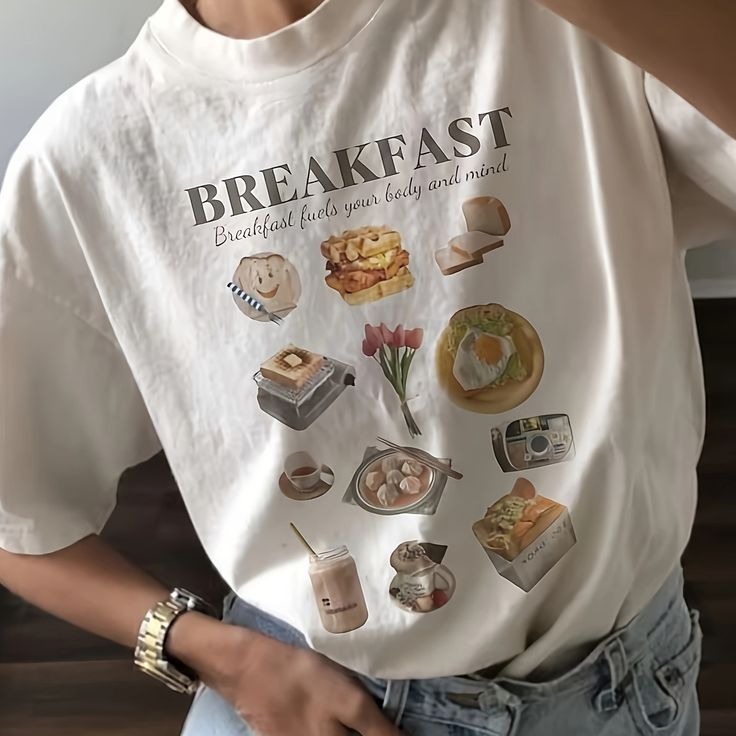Blog
The Shifting Canvas of Style

Opening Reflections
Fashion is an ever present thread weaving through daily life, a reflection of the ways in which individuals and societies present themselves to the world. It encompasses more than mere garments and accessories; it embodies creativity, identity, heritage, innovation, and aspiration. While at first glance it may seem fleeting, fashion also captures enduring cultural narratives and evolving values. In examining the multifaceted nature of style, one must attend to its origins, its role as a form of expression, its dialogue with technology and environment, and its projection toward future possibilities. This exploration seeks to offer a cohesive account of how fashion functions as both mirror and catalyst of change, tracing its arc from earliest beginnings to imagined horizons.
Roots in Tradition and Craft
Long before fashion assumed the rapid shifts of contemporary cycles, attire served fundamental needs: protection from climate, modesty, and communal identification. Early textiles emerged through experimentation with natural fibers and simple weaving techniques. Over generations, artisanal practices developed in diverse regions, yielding distinctive motifs and methods. Embroidery, dyeing, weaving, and tailoring grew into rich traditions that carried symbolic import. Garments could signify status, ritual role, or membership in a given group. Ceremonial robes and everyday tunics alike bore meaning through color, pattern, and silhouette. This grounding in craft and ritual remains visible today in revived interest in heritage techniques and in respect for makers who carry ancestral knowledge. The resonance of such traditions reminds us that fashion is anchored in human ingenuity responding to environment and community values.
Fashion as Cultural Expression
Beyond practicality, clothing functions as language without words. Choices of shape, hue, texture, and adornment communicate attitudes, beliefs, and affiliations. Style can assert belonging or signal departure from norms. Garments have been adopted as political emblems, as markers of rebellion, or as assertions of cultural pride. Through dress, individuals craft narratives of self, aligning with or resisting prevailing currents. In many contexts, attire intersects with questions of gender, identity, and social role. For some, clothing offers liberation and discovery; for others, it can impose prescription or constraint. The dynamic tension between conformity and innovation in dress reveals broader social dialogues. When a community reclaims traditional motifs in new contexts, it asserts continuity while adapting to modern life. When subcultures invent new silhouettes, they challenge conventions and invite reconsideration of aesthetics. Thus, fashion becomes a venue for negotiation of meaning and a way for individuals to locate themselves within shifting cultural landscapes.
The Artistry of Design and Craftsmanship
At the heart of fashion lies design, where creative vision meets material exploration. Designers interpret inspiration drawn from art, architecture, nature, history, and lived experience. Through sketches and prototypes, they translate ideas into forms that may be worn. Selection of fabric engages both tactile sensibility and technical demands. Some creations prioritize drape and movement; others focus on structure and form. The relationship between body and garment is central: each cut and seam interacts with posture, motion, and proportion. Within ateliers, skilled artisans apply techniques refined over generations: hand stitching, intricate beading, or specialized finishes. Even as mass production expands access, there persists reverence for pieces crafted with meticulous attention. Haute couture ateliers exemplify this devotion, yet smaller ateliers and independent artisans also carry forward traditions. The interplay between innovation and heritage shapes collections that speak to the moment while honoring timeworn methods.
Innovation and the Technological Frontier
Fashion has always been influenced by technological advances, from mechanized looms that transformed textile production to synthetic fibers that introduced new possibilities. Today, digital tools have entered every stage: computer aided design, virtual sampling, three dimensional modeling, and even virtual fashion shows experienced through immersive platforms. Data analytics informs forecasting while artificial intelligence experiments with pattern generation or customized recommendations. Innovations in material science yield fabrics with enhanced performance—breathable membranes, sustainable alternatives to conventional fibers, or smart textiles embedding sensors. Manufacturing processes are evolving through techniques such as three dimensional knitting and on demand production, seeking to reduce waste and adapt supply to actual demand. Yet, the integration of technology also raises questions about the human dimension: how to preserve tactile pleasure and the unique imprint of handmade artistry in an era of automation. The challenge lies in balancing efficiency and scalability with authenticity and meaning.
Ethical Considerations and Environmental Stewardship
As fashion’s global reach has expanded, so too have concerns about its social and ecological impact. Production chains span continents, often involving complex networks of labor, transport, and consumption. Reports of unfair labor conditions and environmental degradation have prompted calls for greater transparency and responsibility. Some brands have embraced principles of ethical sourcing, ensuring fair treatment of workers and prioritizing materials with lower ecological footprint. Practices such as upcycling and recycling aim to extend the life of garments and reduce waste. Designers explore alternatives to resource intensive processes, experimenting with plant based dyes and regenerative agriculture for fibers. Consumers, too, play a role by seeking longevity in their wardrobes and supporting creators who align with values of stewardship. This shift reflects deeper cultural awareness that the beauty of fashion need not come at the expense of people or planet. It invites collective action to reimagine systems of creation and consumption in harmony with environmental limits.
Individual Identity and Personal Narrative
While broad trends circulate through runways and media, fashion’s most intimate resonance occurs in individual choices. Each person curates a wardrobe that reflects taste, daily needs, aspirations, and emotional states. Dressing can be ritualistic: selecting attire becomes a form of preparation, a way to face the day or an event with intention. Some find solace in familiar pieces, while others relish novelty and experimentation. Through accessories and styling, even simple garments become personalized statements. This process of self styling nurtures confidence and can foster connection when shared interests emerge among peers. For many, the evolution of personal style parallels life transitions—changes in role, environment, or perspective. The practice of mindful consumption encourages reflection on why we choose certain garments and how they support our narratives. In this way, fashion transcends surface appearance to become an extension of inner life.
Global Flows and Cultural Exchange
In a globally connected world, influences traverse boundaries with unprecedented speed. Textiles and motifs from distant regions inspire designers everywhere. Collaborations between artisans in varied locales and designers seeking authenticity create hybrid expressions that honor origins while forging new forms. At the same time, the ubiquity of digital platforms amplifies voices that might once have been marginalized, bringing diverse aesthetics into dialogue. This interconnectedness can foster appreciation of cultural richness, yet it also raises issues of appropriation and respect. Meaningful exchange entails understanding context and acknowledging sources. When design borrows from tradition, crediting artisans and ensuring benefits flow back to communities becomes vital. Through equitable partnerships, fashion can celebrate diversity while nurturing sustainable livelihoods. As ideas circulate, new aesthetics emerge that transcend singular geographies, reflecting a world in flux yet rooted in the specificity of place and heritage.
The Role of Media and Digital Platforms
The ways in which people encounter fashion have transformed alongside changes in media. Print magazines once guided tastes through editorials and features. Today, digital channels provide vast arrays of imagery, commentary, and peer sharing. Influencers and content creators offer perspectives on styling and critique, shaping perceptions of what is desirable or noteworthy. Social platforms enable instantaneous feedback, amplifying trends but also accelerating the pace at which they rise and fade. Virtual try on tools and online communities allow experimentation beyond physical boundaries. Yet, the abundance of images can produce pressure to conform or to constantly renew one’s wardrobe. The challenge is to navigate this landscape thoughtfully, using media as a source of inspiration without succumbing to unsustainable consumption. For creators, digital channels open avenues to build direct relationships with audiences, inviting dialogue and co creation. In this dynamic environment, authenticity and storytelling gain prominence as anchors amidst rapid change.
Balancing Change and Continuity
Fashion’s vitality stems from tension between innovation and tradition. While each season may usher in new silhouettes or concepts, echoes of the past often resurface in refreshed form. Vintage revivals, reinterpretations of classic lines, and homage to bygone eras demonstrate how history informs the present. At the same time, emerging voices push boundaries, questioning assumptions about form, gender, or purpose. The dialogue between past and future sustains fashion’s relevance, offering both comfort in familiarity and excitement in discovery. Designers and consumers alike navigate this interplay, selecting elements that resonate while envisioning new possibilities. In this way, fashion becomes a living archive, charting cultural shifts and individual journeys. Its patterns of revival and transformation remind us that style is not static but an unfolding narrative that adapts to each moment.
Future Horizons
Looking ahead, fashion will continue to evolve in response to technological advances, environmental imperatives, and shifting social values. Emerging innovations in materials science may yield new fibers derived from unexpected sources. Digital experiences could expand beyond screens into immersive virtual spaces where garments exist in novel dimensions. Ethical commitments may deepen, with circular systems becoming widespread and design processes integrating life cycle thinking from inception. Personalization might grow more sophisticated, blending biometric insights with individual tastes to craft garments tailored in form and function. At the same time, the human element—craftsmanship, storytelling, cultural memory—will remain vital in lending garments meaning and value. As communities seek authenticity, designers and makers who foster genuine connections will occupy essential roles. The future of fashion lies not only in what is produced but in how it is conceived, shared, and cherished.
Closing Reflections
Fashion is a rich tapestry of art, culture, industry, and personal narrative. It engages both collective currents and intimate impulses. Through understanding its roots, acknowledging its impacts, and embracing responsible innovation, we can appreciate fashion not merely as surface adornment but as a dynamic field of creativity and connection. Each choice of fabric and form participates in dialogues about identity, sustainability, technology, and heritage. As the landscape of style continues to shift, the enduring power of fashion lies in its ability to reflect who we are and to imagine who we might become. In weaving together past insights and future visions, fashion invites us to engage thoughtfully with ourselves, with each other, and with the broader world.
